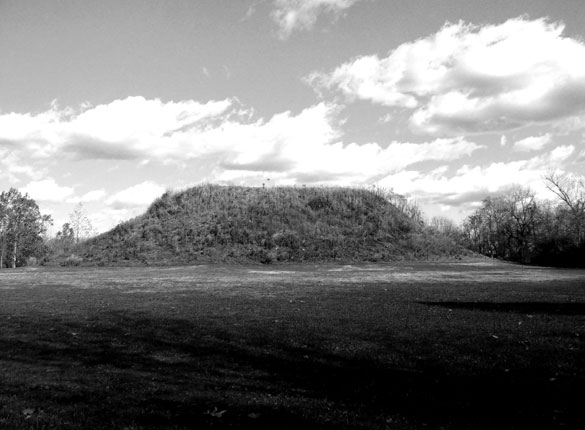- Winterville Site
Infobox_nrhp | name =Winterville Site
nrhp_type =nhl

caption = A photo of the main mound at the Winterville Site in Greenville, Mississippi
nearest_city=Greenville, Mississippi
locmapin = Mississippi
area =
architect=
architecture=
designated=September 14 ,1993 cite web|url=http://tps.cr.nps.gov/nhl/detail.cfm?ResourceId=1347&ResourceType=Site
title=Winterville Site |accessdate=2007-10-23|work=National Historic Landmark summary listing|publisher=National Park Service]
added =August 17 ,1973 cite web|url=http://www.nr.nps.gov/|title=National Register Information System|date=2007-01-23|work=National Register of Historic Places|publisher=National Park Service]
governing_body = State
refnum=73001031Winterville Site is an
archaeological site of Indian mounds that is thetype site for the Winterville phase of the Mississippian culture.Winterville Mounds
Winterville Mounds, named for a nearby community, is the site of a prehistoric ceremonial center built by a Native American civilization that thrived from about A.D. 1000 to 1450. The
mound s, part of the Winterville society's religious system, were the site of sacred structures and ceremonies. Archaeological evidence indicates that the Winterville people lived away from the mound center on family farms in scattered settlement districts throughout the Yazoo-Mississippi River Delta basin. Only a few of the highest-ranking tribal officials lived at the mound center. The Winterville ceremonial center originally contained at least twenty-three mounds. Some of the mounds located outside the park boundaries have been leveled by highway construction and farming. Twelve of the site's largest mounds, including the 55-foot-high Temple Mound, are currently the focus of a long-range preservation plan being developed by the Mississippi Department of Archives and History and the University of Mississippi's Center for Archaeological Research.Archaeological evidence indicates that the Indians who used the Winterville Mounds may have had a civilization similar to that of the Natchez Indians, a Mississippi tribe documented by French explorers and settlers in the early 1700s. The Natchez Indians' society was divided into upper and lower ranks, with a person's social rank determined by heredity through the female line. The chief and other tribal officials inherited their positions as members of the royal family. The elaborate leadership network made mound building by a civilian labor force possible.
A great fire during the late 1300s consumed the original building on the Temple Mound at Winterville. According to archaeological evidence, the cause of the fire remains a mystery. The site continued to be used afterwards, but no more mounds were built or maintained. Even though the site continued to be occupied after the fire, the general population declined at Winterville while increasing at settlements and mound sites 50 miles to the south, in the lower
Yazoo River basin. By 1450 A.D. the Winterville Mound site appears to have been abandoned completely.It was declared a
National Historic Landmark in 1993.Culture, phase and chronological table for the Winterville Site
References
ee also
*
Mississippian culture
*Southeastern Ceremonial Complex
*Monk's Mound
*Mound builder (people)
*Kincaid Mounds State Historic Site
*American Bottom
*Angel Mounds
*Moundville Archaeological Site
*Etowah Indian Mounds
*Spiro Mounds
*Emerald Mound Site External links
* [http://mdah.state.ms.us/hprop/winterville.html Winterville Mounds, at Mississippi Department of Archives and History]
Wikimedia Foundation. 2010.
